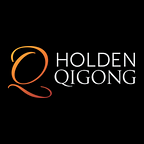How to Cultivate a Healthy Spine (Video Lesson)
Life is an ever-dynamic experience that engages our mind and body in a vast variety of activities on a daily basis. The spine serves as the foundation for all physical and energetic activity taking place within the body — the “Governing Channel” running throughout our beings.
In the following video master Qi Gong teacher, Lee Holden, shares a Chinese Medicine and Qi Gong perspective on spine health.
Yin and Yang of the Spine
In the West, medical doctors tend to focus pretty exclusively on the physical body (yang) when performing a treatment on a patient. In contrast, Traditional Chinese Medical Doctors look to the more “subtle” practices that address the body’s energetic state (yin).
Both approaches hold wisdom, as the body exists in both a physical form as well as an energetic state (often referred to as formless). Qi Gong is an approach that integrates both and uses each for the benefit of the other.
In a physical context, poor posture and lack of movement can create lines of tension throughout the back and neck. This physical tension is compounded by the energetic stress that anxiety and worry can cause. In addressing the spine through a Qi Gong practice, a practitioner will first focus on movements that lubricate the joints and bring fluidity and flexibility to the muscles.
By releasing lines of tension in the physical body, the energetic body begins to flow with ease. As the routine progresses, a practitioner will seek to enter into long, flowing movements that activate the body’s innate energy and clear emotional stress. In turn, the practitioner’s emphasis on effortless flowing movements (bioenergetics) will bring greater comfort and ease to the physical body (biomechanics).
It’s no surprise that stress and back pain often go hand in hand. Similarly, it should be no surprise that a calm mind and tranquil emotions often lead to the relief of physical pain and discomfort. A Qi Gong practice engages the physical body to heal the energetic body, and vice versa.
Another Way of Looking at Bioenergetics and Biomechanics
In the west, Traditional Chinese Medicine is often referred to as “alternative” medicine. However, in China, TCM and Qi Gong are very common, and indeed, traditional rather than alternative.
Each method has its own vocabulary and way of explaining various activities within the body. In this case, a western medical doctor discussing the effects of Qi Gong would turn to the sympathetic and parasympathetic nervous systems.
Stress, anxiety, and worry tend to push people to involuntary engage their sympathetic nervous system. The sympathetic nervous system is what activates when we need to think quickly or exercise our “fight or flight” response.
Rushing to get somewhere on time, stressing about a work meeting, or trying to make a difficult decision are all activities that engage the sympathetic nervous system. Without knowing it, life’s demands are constantly causing us to activate this part of ourselves. The consequence is tension, anxiety, and emotional stress.
When you practice Qi Gong and move through the sequences described above, the body’s nervous system moves from a sympathetic state to a parasympathetic state. While the sympathetic nervous system is known for “fight or flight,” the parasympathetic nervous system is known for “rest and digest.”
As you move into a parasympathetic state, the body releases stress and clears negative emotions. In a physical context, your body digests food and recharges the muscles and organs. These activities are observed and described in western medical texts, showing that both TCM and western medicine are simply describing the same occurrences with different vocabulary.
What is really fascinating about Qi Gong is its ability to affect the body in ways that our conscious minds can’t even imagine. In western medicine, the sympathetic and parasympathetic nervous systems are both part of the autonomic nervous system, which functions involuntarily.
This means that normally people cannot control the sympathetic and parasympathetic nervous systems, or decide which one they want to experience. In daily life, you don’t get to say “I think I want to feel calm and relaxed and digest my food now.”
Too often, we’re stuck in a sympathetic state of tension and feel powerless to do anything about it. Qi Gong gives individuals the power to influence their own autonomic nervous system, and create a parasympathetic state that welcomes peace, tranquility, and health.
Lee Holden’s Journey to Discovering Qi Gong
During college, Lee played soccer for U.C. Berkeley, and naturally, his sport was a big part of his life at the time.
During one soccer match, Lee jumped up to headbutt the ball and found his legs swiped sideways by another player, causing him to land forcefully on his lower back. For a bit, Lee followed the protocol of his western medical doctor, but not even cortisone shots could alleviate his pain.
After a failed attempt to heal by following his doctor’s advice, Lee decided to visit a martial arts teacher that he know, who was also an acupuncturist and Qi Gong teacher.
After just two visits, Lee’s pain was 90% better, and he realized the profound power that the practice holds. As he continued to practice and recover, his interest in Qi Gong intensified. Over time, what started as a personal practice to heal his back grew into a lifelong path to help others experience the same healing power.
Here is a sample routine with Lee.
If you’re interested in trying more Qi Gong routines taught by Lee Holden, be sure to check out the Free Two-Week Qi Gong Trial.
Free Two-Week Qi Gong Trial
When you sign up for the Free Two-Week Qi Gong Trial, you’ll gain immediate access to five unique Qi Gong classes taught by Lee.
In addition to helping you cultivate a healthy spine, Qi Gong offers numerous other benefits including reduced stress, increased energy, and greater emotional balance. Learn more and give it a try today.
